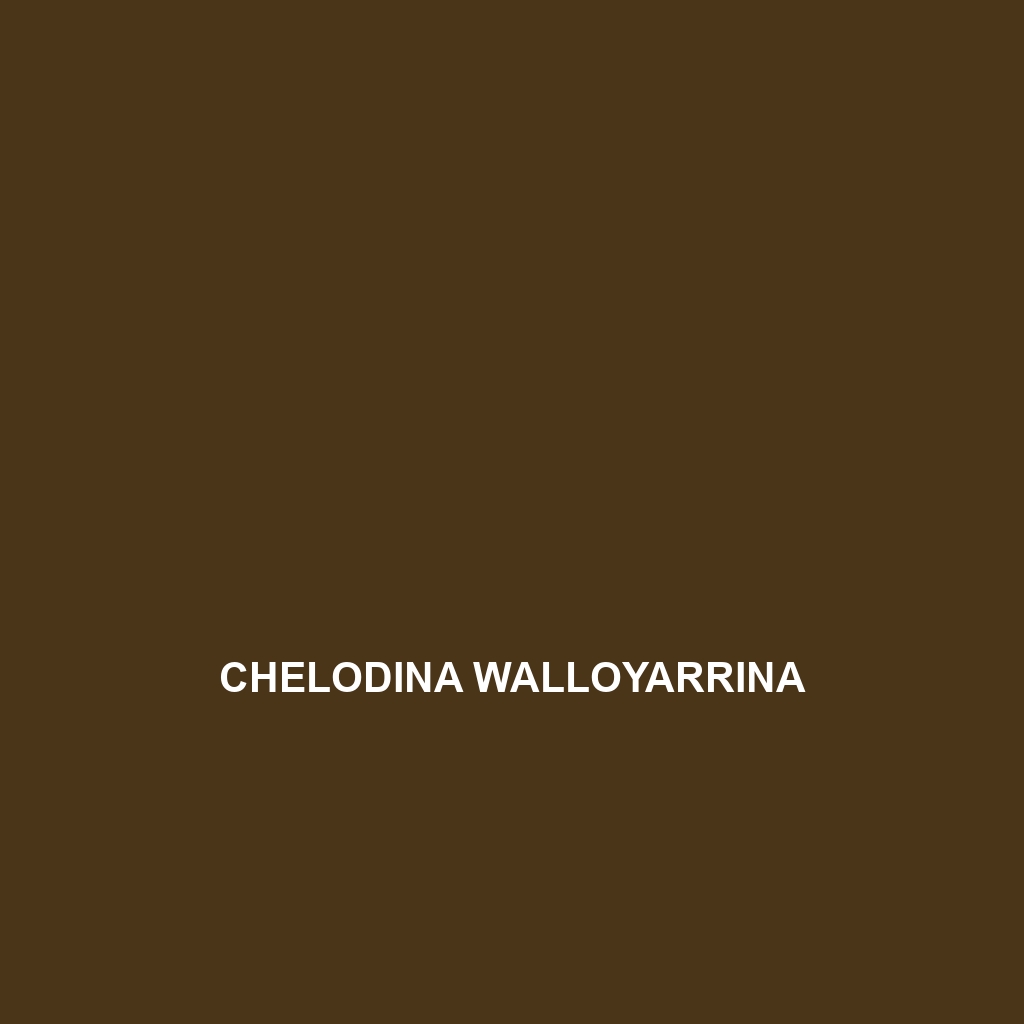Species Description: Chelodina rugosa
Common Name: Chelodina rugosa
Scientific Name: Chelodina rugosa
Habitat:
Chelodina rugosa, commonly referred to as the Eastern Long-necked Turtle, is primarily found in southeastern Australia. This species inhabits freshwater environments, including rivers, lakes, and swampy areas. The preferred habitats are often characterized by slow-moving waters with abundant vegetation, providing both shelter and food sources for these reptiles.
Physical Characteristics:
Chelodina rugosa can grow to a length of up to 40 cm (approximately 15.7 inches) and is distinguished by its long neck and flattened shell. The shell exhibits a smooth, olive to brown coloration that can sometimes feature patterns or lighter markings. The turtle’s neck can be up to three times the length of its shell, which is a significant trait that helps it reach underwater vegetation for feeding. The unique shape of the shell and the long neck make this species easily recognizable among other freshwater turtles.
Behavior:
Typically, Chelodina rugosa is a semi-aquatic species, often seen basking on logs and basking in the sun. This turtle is known for its gentle disposition and relatively shy demeanor. It spends much of its time foraging for food underwater, using its long neck to reach for aquatic plants. Chelodina rugosa is also noted for its ability to remain submerged for extended periods, showcasing its adaptability to various water habitats.
Diet:
The diet of Chelodina rugosa primarily consists of aquatic vegetation, insects, and small invertebrates. These turtles exhibit herbivorous and carnivorous feeding habits, often foraging on algae and water plants during warmer months. The ability to switch between different food sources is crucial for their survival, especially in fluctuating environmental conditions.
Reproduction:
Chelodina rugosa typically breeds during the warmer months, with mating occurring in the spring and summer. Females lay between 10 to 20 eggs in sandy or soft soil, which they bury for protection. The incubation period lasts around 3 to 4 months, after which hatchlings emerge, often using instinct to find their way to water. Maternal care is absent, but the nesting behavior plays an important role in the survival of the young.
Conservation Status:
Currently, Chelodina rugosa is classified as “Least Concern” by the International Union for Conservation of Nature (IUCN). However, local populations may face threats from habitat destruction, pollution, and climate change, warranting ongoing monitoring to ensure their future survival.
Interesting Facts:
One remarkable feature of Chelodina rugosa is its ability to breathe through its cloaca, allowing it to stay submerged for longer periods. This unique adaptation is particularly beneficial in predator-rich environments, showcasing the turtle’s evolutionary resilience.
Role in Ecosystem:
As a herbivore and omnivore, Chelodina rugosa plays a critical role in maintaining aquatic ecosystems. By consuming vast amounts of vegetation, they contribute to the health of their habitats, promoting plant growth and helping to stabilize the aquatic ecosystem. Moreover, as prey for various predators, they also contribute to the food web, highlighting their integral role within their habitat.
